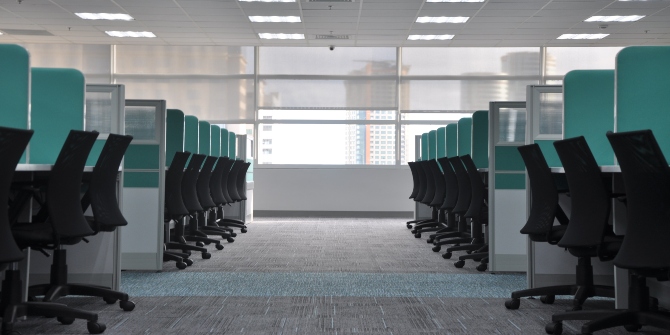
We are in a global crisis. It’s a matter of life and death. There are still shortages of supplies and equipment around the world including acute shortages in America. We know there is plenty of manufacturing capability around the world for consumer goods, PPE, testing equipment, and medical devices such as ventilators. But flexing global supply chains is complicated and medical equipment is highly regulated by all governments. The results of inflexible global supply chains are overages of some supplies in some areas and shortages in others.
In America, there is no coordinated nationwide effort for acquisition of supplies. Procurement by thousands of individual American hospitals and multiple state governments is uneven, inefficient, and results in high variability in costs. There is no consistency for countries around the world in policies regarding the pandemic and no standardised approach to sourcing products. Every country is alone in procuring supplies. Supply chains are in chaos.
Global supply chains sourcing from China
Global supply chains are also part of the problem. Much of the inventory of personal protective equipment such as masks and hospital gowns is coming from China. This is because over the past 20 years or so, China has become the low-cost production leader, particularly for high-touch, high-labour-content processes such as sewing. This production cost profile (high-touch, high-labour-content) is well-suited to low-cost countries such as China, Vietnam, Bangladesh, Mexico and others. From a market economy perspective, this is appropriate. But strictly economic decisions have not served the markets very well in this pandemic emergency, with so many human lives at stake. Having no capacity for producing PPE in our home countries leaves us vulnerable and completely dependent on China.
Eventually, supplies will catch up with demand, local factories will open, and the short-term needs will be met. Longer term, most Western countries, including those in North America and Europe, are beginning to rethink their dependence on China as the primary source for critical goods or those that could become critical in the future. The COVID-19 pandemic has made us all rethink our dependence on other countries for pharmaceuticals, food products, industrial equipment, rare earth elements, and high technology. With the trend for countries becoming more ethnocentric, many governments are talking about reshoring.
Industrial policy and incentives
It takes more than just talk, however. Businesses make decisions based on economics and if the costs are too high to reshore manufacturing, it just won’t happen. Governments are in a tough position – create incentives for manufacturers to produce domestically, subsidise domestic companies, create new laws requiring domestic production, or applying tariffs to imported products to make domestic production appear to be more competitive.
This idea of looking inward instead of globalising has become a popular trend for the past few years. The U.S., as well as many other Western countries, have no formalised industrial policy, and are now considering building one. This means that government subsidies and tax incentives for industries deemed critical are on the horizon.
To build an industrial policy, the U.S. would need to identify critical industries and apply interventionist measures such as tax and investment structures to encourage development and growth. So far, the U.S. has been unwilling to go this far and prefers to allow the marketplace to determine what is to be manufactured. Government interference in the free market has never been a popular idea in America.
Leaving China
Even if some industries are deemed critical and incentives are provided, there are still difficult hurdles in leaving China and redirecting supply chains to another country or to reshoring.
The decision to leave China isn’t an easy one. With nearly 350 million people in China’s middle class and growing, China is likely to be a company’s biggest target market over the next 20 years. As the Chinese middle class grows, so does its disposable income and the desire for all kinds of products, particularly those with Western brand names. To serve this market, many manufacturers are deciding to leave at least some of their production in Asia.
At the same time, American boards and executives are pushing to increase manufacturing in the US and bring some of the outsourced production home. This represents a significant shift in thinking from determining where in the world to manufacture in order to take advantage of low-labour and other costs, to considering a more global manufacturing strategy.
But it’s not that easy. Companies cannot expect to simply pack up shop, lock the doors, turn out the lights, and move back to the U.S. or Western Europe. There are many issues to consider when leaving China.
The employees
In China, most workers are hired under employment contracts lasting one-two years. If a company closes its factory in China, the expectation is that all employees must be paid until the end of their contract. This is often a costly surprise to Western companies.
Tooling and moulds
Packing up and shipping or trying to retrieve tools and moulds from a Chinese manufacturing site can also be problematic. Often, a Western manufacturer will send machine tools or moulds to a Chinese original equipment manufacturer (OEM) or to their own Chinese factory. These tools and moulds, sometimes worth hundreds of thousands of dollars, may be needed to produce products.
If a company does not take steps to clearly identify ownership, and sign an agreement to that effect including serial numbers positively identifying each item, it may never see the tools and moulds again. This is because the Chinese believe that they have been given the equipment and it becomes part of the plant’s assets. The Chinese government may not allow the machines, tooling, and moulds to be exported.
Manufacturing intellectual property
When a company leaves China, it also leaves behind its manufacturing intellectual property if the Chinese have been taught confidential production methods. We’ve all heard the horror stories about IP protection, copying, and counterfeiting in China. To protect their IP, most Western companies now register their patents and brands in China. But production methods and raw materials aren’t always as well protected. The company may have taught the Chinese factory how to make their product – methods they are likely to continue to be used to produce the same product under a different name.
Taxes
In addition to paying out employment contracts, there may be other regulations that must be considered. China’s Commerce Department has issued guidelines for withdrawal from China by foreign investors. China law requires that foreign investors inform creditors of the closing, settle all outstanding taxes, pay all pending debts, liquidate property, and de-register the business. In addition, companies may be required to pay closure taxes. All this takes time and money.
The way forward
There is a lot to consider when designing a new global manufacturing strategy. Many things are now in flux including the global trade wars, domestic industrial policy, and incentives. With the U.S. presidential election in November 2020, changes in policy are likely to affect global relationships.
So many companies make the mistake of simply comparing labour costs when determining their reshoring pathway. But there is so much more to a reshoring decision, especially within the context of a global pandemic and the resulting global recession. There is no sweeping correct answer applicable to all enterprises in all countries. Microeconomics of the firm will drive the final decision to reshore or not.
♣♣♣
Notes:
- The post expresses the views of its author(s), not the position of LSE Business Review or the London School of Economics.
- Featured image by Robert Scoble, under a CC-BY-2.0 licence
- When you leave a comment, you’re agreeing to our Comment Policy
 Rosemary Coates is the executive director of the Reshoring Institute and the president of Blue Silk Consulting, a global supply chain consulting firm. She is a best-selling author of five books on global supply chain management including: 42 Rules for Sourcing and Manufacturing in China. Ms. Coates lives in Silicon Valley, California, and has worked with over 80 clients worldwide. She is also an expert witness for legal cases involving global supply chain matters. Twitter: @ReshoringTeam LinkedIn Facebook
Rosemary Coates is the executive director of the Reshoring Institute and the president of Blue Silk Consulting, a global supply chain consulting firm. She is a best-selling author of five books on global supply chain management including: 42 Rules for Sourcing and Manufacturing in China. Ms. Coates lives in Silicon Valley, California, and has worked with over 80 clients worldwide. She is also an expert witness for legal cases involving global supply chain matters. Twitter: @ReshoringTeam LinkedIn Facebook






A useful article reminding us that what seems simple to say is often hard to do in practice. I wonder if the more realistic objective might be to diversify supply and build up stocks rather than revert to costly protectionism. As the article notes, other countries have the labour mix required for these goods, would welcome inward investment, and may be more supportive of good business practice. Building adequate strategic stocks would provide some protection against the danger of future disruption. However, what the crisis also showed is that business can adapt quite rapidly to producing what is needed but public procurement was sometimes slow and not very imaginative in placing orders. As the next pandemic will be different to this one, an agile business base and more responsive procurement may be a key part of the answer.
The other issue is that the US workforce likely won’t have the training for high-tech manufacturing jobs in the low-cost areas where manufacturing would be relocated out of China. We have to couple bringing back manufacturing jobs with vocational training that requires computer skills that many people don’t have.